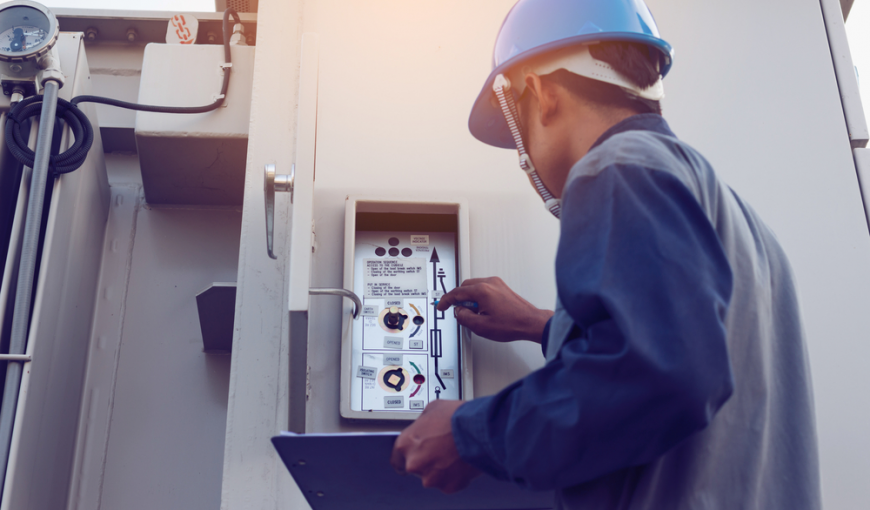How To Make The Most Of Your Wireless Access Point Coverage

In order to design an effective wireless solution, there are a few things to consider. The size of the space, the user count or number of devices on the network, and what the users are running on those devices. A good floor plan covers the square footage, but it’s even better to have an engineer conduct a site survey to be familiar with the construction of the building as well as potential obstructions to signal propagation. Once the physical aspects of the space have been properly assessed, a best practice is to incorporate the people aspects (user count and IT activities) before moving on to the design phase. With access point coverage, distance and end user density dictate what you’ll need.
High Density Environments
Let’s start with density. Although enterprise-grade access point coverage is usually 1,100 square feet, this is often best-case scenario with a wide-open floor plan. Many times a wide open floor plan lends itself to densely placed desks or cubicles. Each person who is sitting at these desks or cubicles may have two or even three devices (laptop, phone, maybe a tablet or watch) connecting to the wi-fi. These connections really add up quick.
Good questions to ask: How many users will report to the office? What are their typical internet activities? Are they mostly sending emails or working with Microsoft Office applications or are they more like internet power users? Obviously, there’s a big difference in bandwidth between email and an end user population that’s streaming Netflix. For the latter group, the last thing you want is an overloaded access point.
Shawn Sumner, Director of Operations at TechNoir Solutions, a IT services company in Chicago, says, “A lot of people think wireless is in the ether, and an unlimited resource. But you can’t realistically sit 60 people around one access point or 30 people with two devices each and expect to handle HD streaming videos on a single wireless access point.”
If your organization has an open floor plan, with 15 people running 30 devices, within 400 square feet of office space, installing one access point mounted in the hallway outside the office will be insufficient. Then add those high bandwidth or video conferencing users and you will see network performance grind to a halt. To prevent poor wi-fi performance, the network design team should slightly overlap the APs to accommodate high density areas.
A thorough wireless solution also takes into consideration maximum capacity in community spaces or training rooms. Any space that can double in device count should have the AP count and strength to accommodate peak wi-fi usage.
Know Your Devices
Designing an appropriate wireless solution means knowing the coverage capabilities of each device. It’s a choice between more access points with entry level broadcast antennas or fewer, high-power APs with stronger signals. You need to plan for whatever combination enables maximum upload and download speeds for all devices accessing wi-fi in that space. Knowing the specs of the hardware (from basic to performance-critical wireless LANs) should lead to an informed decision. Finding the happy medium between budget and performance factors in the decision.
For example, Meraki an MR33 won’t cover the way an MR42 does. The main reason is they have fewer Multiple-Input Multiple-Output (MIMO) antennas. According to Wikipedia, MIMO is a wireless technology that uses multiple transmitters and receivers to transfer more data at the same time.
So, if you opted for the more affordable, entry level model AP it typically means you have to increase the count of APs you will be installing. Of course, that’s assuming there’s more than a handful of users in an 800 square foot space. While the range of both products may still be the same, the speed and density will vary based on the number of antennas.
Use as Directed
In addition to where the access points are placed, following the manufacturer’s installation guide is crucial. This involves more than attaching the mounting cradle and using the proper tools. The network engineer should follow pre-installation steps beginning with configuring the network. Then the engineer needs to check and upgrade the firmware, check and configure firewalls. Then it’s time to assign the IP address to the device.
Proper Product Placement
A common mistake IT companies make when installing wireless access points is to measure out the distance based on the device’s coverage radius and space them out accordingly during installation. What they don’t consider are numerous points of interference. Unless you’re dealing with an unobstructed, wide-open space, you’re not going to get the maximum square footage that the manufacturer claims. Building materials and device location, with respect to barriers, all contribute to range and signal strength diffraction loss or attenuation. Does the signal need to penetrate brick, timber, or dry wall? How about a steel girder, metal door, or cinder block? Regardless of signal strength, the traditional materials that cause radio interference are still in play, some more than others.
Another less-than-best-practice for AP installation is placing the APs in hallways instead of the offices. The rationale being the signal will travel further down the unobstructed hallway. While that is arguably the case for the hallways themselves, the signal strength will dwindle before it reaches the office at the far end of hallway. The last place you want dead coverage spots is where the end users actually work. For ideal access point coverage, devices should be placed in the center of the office, preferably in the center of where users and their devices will be located.
Location, Location, Location
Additionally, the network engineer should choose a mounting location with a clear line of sight to the coverage area. By contrast, placing the AP in a high ceiling behind a timber rafter or exposed ducts will adversely impact the signal. Thinking of it like a camera, if the users and devices aren’t in the shot, there may be “path loss” of the wireless radio waves.
Ultimately, an effective wireless solution maximizes performance and coverage so every user on that network is happy and seeing all of those bars light up. Being proactive with the design and installation of the access points means users won’t light up the support line.





